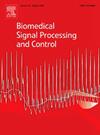Hybrid EEG-fNIRS decoding with dynamic graph convolutional-capsule networks for motor imagery/execution
IF 4.9
2区 医学
Q1 ENGINEERING, BIOMEDICAL
引用次数: 0
Abstract
In this study, we proposed a cascade structure of dynamic graph convolutional and capsule networks for accurate decoding of motor imagery (MI) based brain-computer interfaces (BCIs) with both electroencephalogram signals and functional near-infrared spectroscopy (fNIRS) signals. The same network structure with different parameter settings was applied to these two modalities to extract features through temporal convolution block, dynamic graph convolution block, and capsule generation block. The temporal convolution block was used to learn temporal features, the dynamic graph convolution block to learn spatial features, and the capsule generation block to generate primary capsules. Then the capsuled features will undergo cross-attention and then go through a feature fusion block and a dynamic routing block which is an iterative algorithm designed to learn the connection weights between primary capsules and digit capsules. The mean accuracy of leave-one-session-out testing can reach 92.60 %±4.49 % and 92.20 %±2.95 % for self-collected EEG-fNIRS data (dataset A) and publicly available dataset (dataset B) whereas the accuracy of randomized five-fold cross-validation testing for another publicly available dataset (dataset C) is 85.30 %±3.58 %. Moreover, the leave-one-subject-out testing shows that the proposed method is superior to that of the current state-of-the-art methods, like hybrid EEGNet, hybrid LSTM, or hybrid CapsNet at least 4 % across all three datasets. These results demonstrate that the proposed network structure can be a good candidate for the decoding of MI-based BCIs with multiple modalities.
求助全文
约1分钟内获得全文
求助全文
来源期刊

Biomedical Signal Processing and Control
工程技术-工程:生物医学
CiteScore
9.80
自引率
13.70%
发文量
822
审稿时长
4 months
期刊介绍:
Biomedical Signal Processing and Control aims to provide a cross-disciplinary international forum for the interchange of information on research in the measurement and analysis of signals and images in clinical medicine and the biological sciences. Emphasis is placed on contributions dealing with the practical, applications-led research on the use of methods and devices in clinical diagnosis, patient monitoring and management.
Biomedical Signal Processing and Control reflects the main areas in which these methods are being used and developed at the interface of both engineering and clinical science. The scope of the journal is defined to include relevant review papers, technical notes, short communications and letters. Tutorial papers and special issues will also be published.
 求助内容:
求助内容: 应助结果提醒方式:
应助结果提醒方式:


